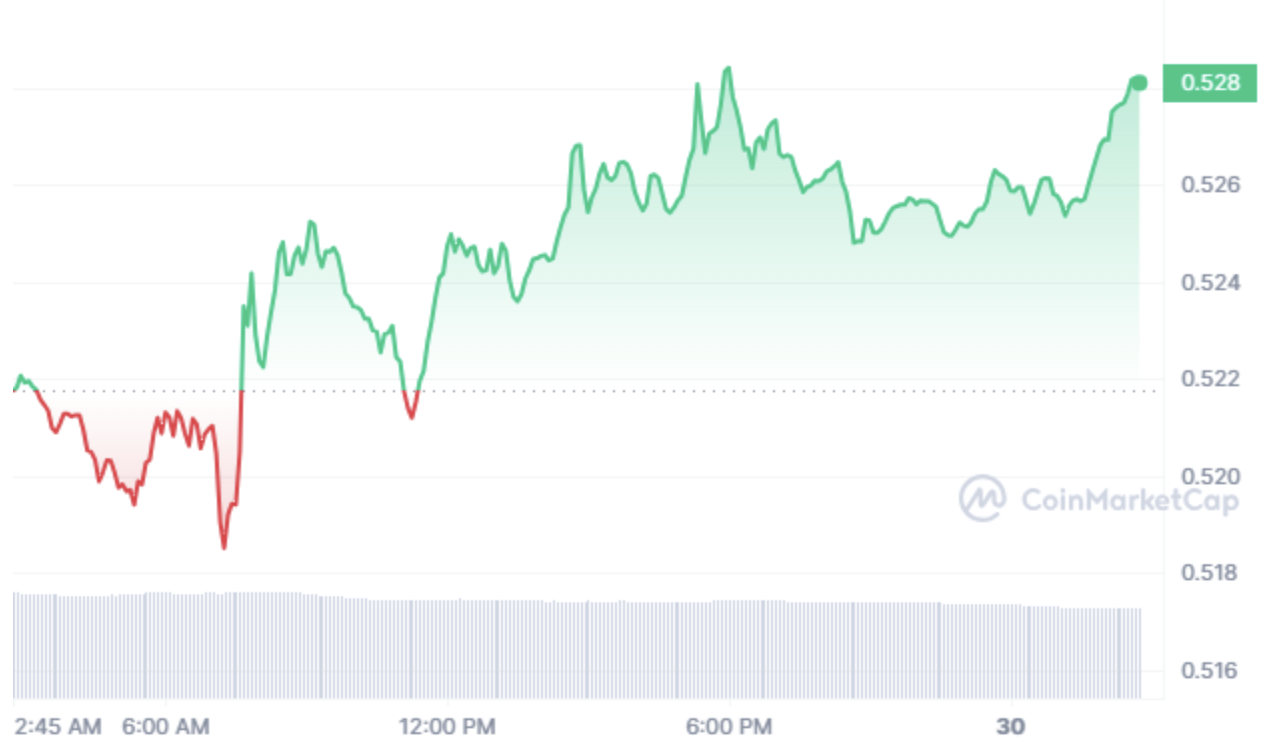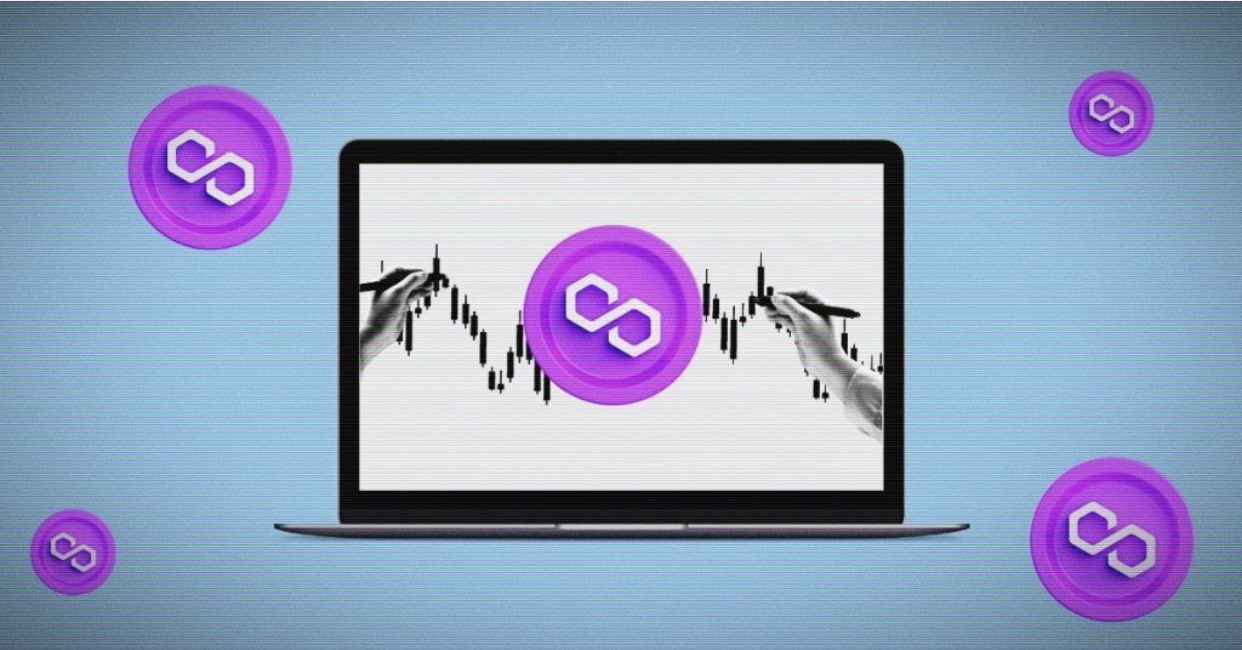Polygon Price
Polygon Price
Polygon (MATIC) is an Ethereum token that powers the Polygon Network, a scaling solution for Ethereum that aims to provide faster and cheaper transactions using Layer 2 sidechains. Polygon was formerly known as Matic Network, and rebranded itself in February 2021 to reflect its expanded vision and scope. Polygon has attracted many developers and users who want to enjoy the benefits of Ethereum without its limitations, such as high gas fees and network congestion.
Polygon has a halving mechanism whereby the block reward for minting new MATIC tokens is reduced by half every 2,100,000 blocks, approximately every two years. The next expected halving is projected to occur in late April 2024.
During a halving event, the block reward will decrease from the current 1.87 MATIC to 0.9375 MATIC. With fewer new tokens entering circulation each block, this should reduce Polygon's annual inflation rate and restrict the overall supply growth of MATIC.
Most analysts expect the upcoming halving to have a considerable impact on MATIC's price. In the months leading up to the event, speculation typically drives the price higher as investors anticipate reduced future supply. However, the aftermath is less predictable. For Bitcoin and other assets, their halvings often corresponded with extended bull market cycles as buyers absorbed the diminished new token issuance.
Polygon Price Live
The live Polygon price today is $0.509309 USD, with a 24-hour trading volume of $255,514,756 USD, according to CoinMarketCap. The token is down 0.68% in the last 24 hours, and has a market capitalization of $4.7 billion USD, making it the 14th largest cryptocurrency by market cap. The circulating supply of Polygon is 9.3 billion MATIC, out of a total supply of 10 billion MATIC.
You can view the live Polygon price in the chart above, which shows the MATIC/USD pair on a daily time frame. The chart also displays the historical prices, trading volume, market cap, and other indicators of Polygon. You can use the chart to analyze the price movements and trends of Polygon, as well as to compare it with other cryptocurrencies.
Polygon chart
The Polygon graph displayed here provides a visual representation of MATIC's historical price data over time. The Polygon chart helps users analyze the performance and volatility of the Polygon token through periods of bull and bear markets.

Viewers can customize the time period shown on the Polygon chart to zoom in on shorter durations or pull out for a bigger picture over months and years. Technical indicators like the 50-day and 200-day moving averages are overlaid on the graph to identify key support and resistance levels.
Common charting elements like lines, arrows and annotations can also be added using the drawing tools. This allows traders to pinpoint potential buy and sell signals by marking areas of interest on the Polygon chart. Videos and tutorials are available to help new users understand how to optimize the chart settings.
Below the Polygon graph is a handy Polygon calculator to convert between MATIC and other currencies. By inputting an amount of MATIC tokens, users can view the estimated value in currencies such as USD, EUR, GBP and more. Automatic price updates from CoinMarketCap ensure accurate conversions using current exchange rates. Combined, the chart and calculator provide comprehensive price data and tools for Polygon price analysis.
Polygon price history
Polygon has had an impressive price history since its launch in April 2019. The token started from a very low value of $0.0004 and gradually increased until it reached its all-time high of $2.68 on May 18, 2021. This was a stunning increase of over 670,000% in less than two years. The price surge was driven by several factors, such as:
- The popularity and demand for Ethereum scaling solutions, which boosted the adoption and innovation of Polygon.
- The endorsement and support of influential figures and organizations in the crypto space, such as Mark Cuban, Coinbase, Binance, Aave, SushiSwap, and more.
- The development and launch of Polygon SDK, a modular framework that allows developers to create and connect various types of Layer 2 solutions on Ethereum.
- The integration of Polygon with leading DeFi protocols , NFT platforms, gaming projects, and other applications that leverage its fast and low-cost transactions.
However, after reaching its peak in May 2021, Polygon experienced a sharp decline in price, along with the rest of the crypto market. The price dropped by over 80% in June 2021, due to factors such as:
- The regulatory crackdown on cryptocurrencies in China, which affected the mining and trading activities of many crypto users.
- The environmental concerns over the high energy consumption of Bitcoin mining, which sparked a debate over the sustainability and impact of cryptocurrencies.
- The profit-taking and panic-selling behavior of some investors, who wanted to cash out their gains or avoid further losses.
- The competition and rivalry from other scaling solutions, such as Arbitrum, Optimism, zkSync, StarkWare, and more.
Since then, Polygon has been trading in a range between $0.50 and $0.60, with occasional spikes and dips. The price has been influenced by various events and developments, such as:
- The launch of Avail, a data availability layer for standalone chains and Layer 2 solutions on Ethereum.
- The announcement of Polygon Studios, a gaming division that aims to bring Web 3.0 games to the masses.
- The integration of Polygon with major crypto platforms , such as Bitfinex, Crypto.com, OKEx, Gemini, Kraken, and more.
- The burning of over 5 billion MATIC (worth about $2.6 billion at that time) by an anonymous user, which reduced the supply and increased the demand for the token.

Polygon Price Prediction
Polygon price prediction is a challenging task, as there are many factors and uncertainties that can affect the future value of the token. However, based on some assumptions and analysis, we can provide some possible scenarios and estimates for the Polygon price in the coming years.
According to some experts, Polygon is expected to increase in price in the long term. Based on their Polygon price prediction, the token may trade at an average of $0.88 by the end of 2023, $1.16 by the end of 2024, $1.49 by the end of 2025, $1.87 by the end of 2026, and $2.53 by the end of 2030.
It is important to note that these are only estimates and projections based on historical data and trends, and they do not guarantee or imply any future results or outcomes. The actual price of Polygon may vary significantly from these predictions, depending on various factors such as market conditions, supply and demand, innovation and development, regulation and adoption, competition and rivalry, and more.
Some of the possible scenarios for Polygon price prediction are:
- Bullish case: Polygon continues to grow its user base, network effect, and ecosystem by integrating more Ethereum-compatible blockchains and applications. Polygon also benefits from the increasing demand for scalability and interoperability solutions in the decentralized space. Polygon launches new features and upgrades that enhance its security, usability, and functionality. Polygon attracts more investors and partners who support its vision and value proposition. Polygon price prediction for this case is that the token could reach new highs in 2023 and beyond.
- Bearish case: Polygon faces technical issues or security breaches that compromise its network or user funds. Polygon also suffers from regulatory hurdles or legal challenges that limit its adoption or operation. Polygon loses its competitive edge or market share to other scaling or interoperability platforms that offer better solutions or services. Polygon experiences a decline in user activity, developer interest, or community engagement. Polygon price prediction for this case is that the token could drop significantly in 2023 and beyond.
Therefore, before investing in Polygon or any other cryptocurrency, you should always do your own research and analysis, consult with experts and professionals, and be aware of the risks and rewards involved.
What is Polygon (MATIC)?

How can I buy Polygon (MATIC)?

How can I store Polygon (MATIC)?

What are the benefits of using Polygon (MATIC)?










